Isolated facts about your company’s products and processes aren’t too helpful to people wanting to learn about the subject.
Whether you’re aiming to create better documents for your employees or improve the state of your user-oriented guides, you have to know how to write informative docs and then how to organize them so that they provide context.
That’s exactly where technical writing and knowledge management meet.
If you want to get informative docs that are also easily navigable and accessible, then you need both of these disciplines.
In this article, we’ll examine how incorporating technical writing can advance the way you manage information and knowledge within your organization.
What Is Technical Writing
Sometimes also defined as “simplifying the complex”, technical writing is a discipline that involves communicating information needed for accomplishing tasks or goals.
If that sounds like a wide-ranging explanation, you’re correct—technical writing does indeed cover many document types and categories, as shown in this overview from the Engineers’ Guide to Technical Writing.
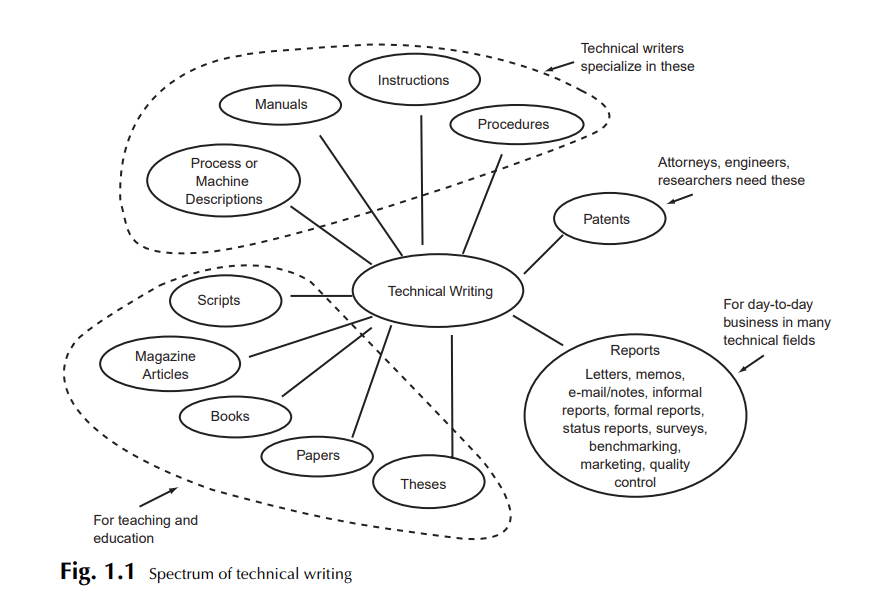
Source: Google Books
The types of technical writing mentioned in the image above vary in scope and complexity.
For instance, product manuals are usually more extensive than technical reports, although both can pertain to the same project.
Still, all pieces of technical writing have one thing in common: tech writing always requires research.
In fact, many technical writers claim that research accounts for the most significant portion of the writing process.

Source: Twitter
Being informed about the subject is a mandatory trait for all writers, but it’s even more crucial in technical writing because this discipline has a pragmatic purpose.
To help readers achieve a task, you have to know all the details about the problem they’re trying to solve, its cause, possible solutions, and the steps needed to execute the solution.
And no matter how complex the problem is, tech writers are there to present information in a way understandable and approachable to the target audience.
Let’s take a look at Slack’s help center to see a good example of technical writing.

Source: Slack
The screenshot above shows the procedure for pinning messages within channels.
The steps are described so directly and concisely that users of all backgrounds can understand and perform them, which is the ultimate goal of technical writing.
So, if you want to help readers learn about your product or internal processes by creating technical documents, you could emulate the approach that Slack applies to creating practical documentation.
In other words, you should give the task to a writer who is well-acquainted with your business so that they can generate helpful documents that benefit your employees company-wide.
That practice will help you create useful documents that also serve as a foundation for your knowledge management system.
What Is Knowledge Management
A set of isolated documents can’t do much to promote knowledge transfer.
If you want to enable your employees or customers to access information when needed, you’ll have to work on knowledge management.
Although knowledge management (KM) entails a wide range of activities related to gathering or organizing information, it can be summarized as “knowing what you or your organization knows,” according to this KM professional from Quora.

Source: Quora
If you’re wondering why organizing the knowledge within a company matters, you should ask yourself what would happen if the information employees needed for work wasn’t properly documented.
In all probability, chaos would ensue.
Even if your team was organized enough to prevent chaos from happening, the employees would have to spend even more time searching for information, resulting in further productivity loss.
Unfortunately, a McKinsey report has revealed that employees spend an already concerning amount of time tracking down information: 19% of the workweek is spent on information hunting.

Source: Archbee
That’s almost like hiring five people and having four of them work while the fifth is off searching for answers and not contributing any value.
So, if you’d like to minimize downtime, you need to ensure that all the info the employees need is instantly available, which is something that knowledge management can help you with.
KM means more than compiling a list of best practices to use while working.
The KM process first requires you to assess the current state of knowledge, identify knowledge gaps, create new documents to fill the gaps, and organize the information so that readers can easily discover and utilize it.
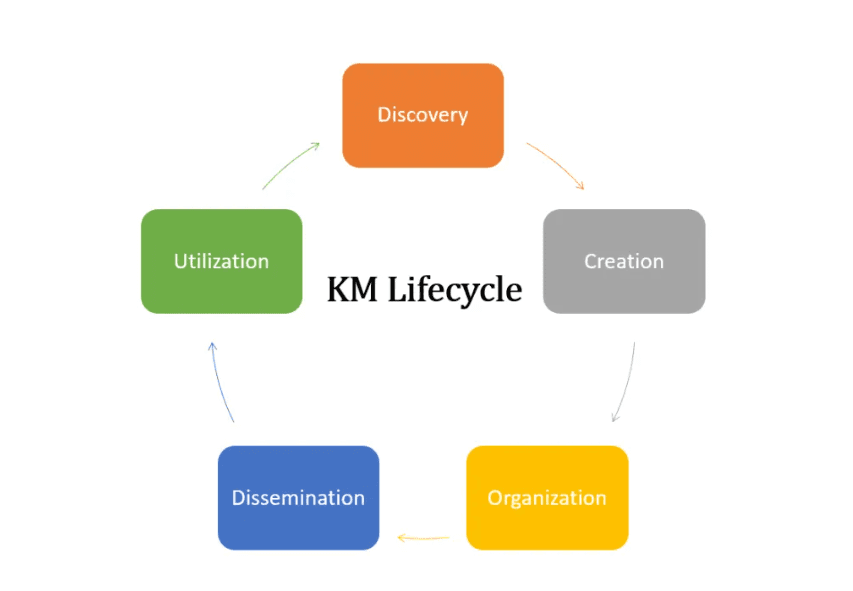
Source: The ECM Consultant
With a KM system in place, your employees will be able to find the necessary information as soon as they need it and even share knowledge with other team members or departments.
However, cryptic documents that make sense to a limited group of people may not be helpful to managers or newly joined employees, which is why you should strive for standardization in documenting knowledge.
And that’s where technical writing comes into play—you can only support knowledge sharing with structured, clear, and well-written documentation.
The following section will discuss the importance of the role that tech writing plays in knowledge management, so keep reading.
The Importance of Technical Writing in Knowledge Management
Since both technical writing and knowledge management have to do with organizing and sharing information, it’s not surprising that they interact well.
If you want to make your knowledge management strategy as effective as possible, it’s best to create your knowledge base by applying the standard technical writing principles, such as minimizing the use of jargon or keeping the docs consistent.
Essentially, the way your company carries out technical writing can result in benefits related to knowledge management. We’ll now see three different areas where you can see these benefits.
Creating High-Quality Documentation
When you establish great tech writing practices at your company, you ensure that each generated piece of content becomes a part of high-quality documentation, whether you create docs for internal use or for end-users.
If we pinpoint information sharing as the main purpose of knowledge management, the importance of technical writing becomes evident.
For instance, if you wanted to create an employee handbook like the one you can see in the image below, it would be vital to describe company structure and work processes in plain language.
After all, you shouldn’t expect the newcomers to understand your company’s jargon.

Source: Archbee
Considering that this way of writing is strongly favored in the tech writing community, you could ask your technical writers to use it to convey all the crucial information a new employee might need.
Over time, you’ll end up with comprehensive documentation that clearly describes your internal processes, no matter how technical or non-technical they are.
Likewise, documenting your product while you’re developing it will grant you the foundation you can later use to create excellent user-oriented docs.
That’s right—knowledge management also refers to sharing information with end-users.
FAQ sections, tutorials, and user guides like the one below are just some of the areas where you can implement technical writing to help customers use your product.
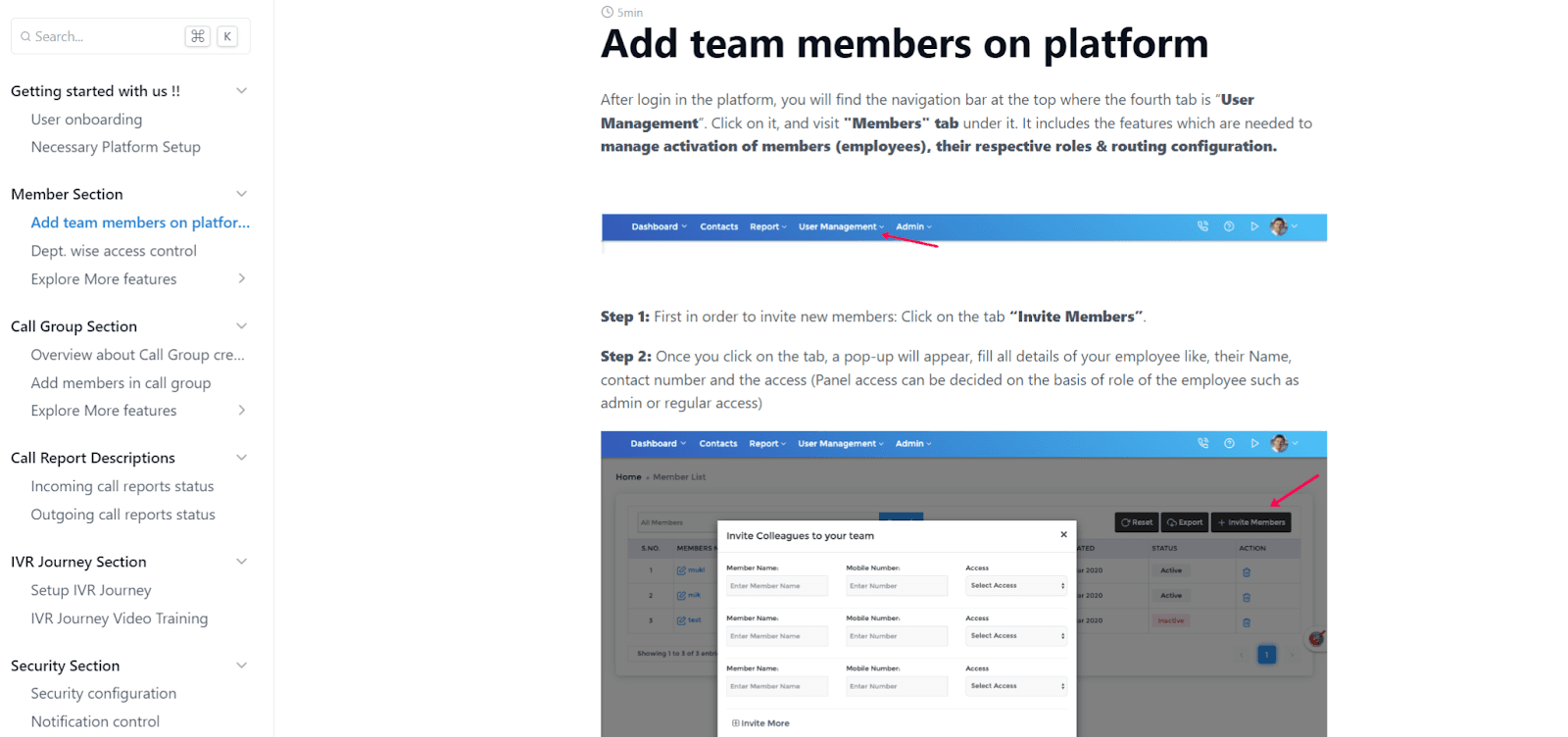
Source: CallerDesk
You should bear in mind that the average customer who uses the product probably isn’t as technically minded as the people who have developed the product.
That’s why it’s best to leave document creation to technical writers—they know how to present complex concepts and processes in a way understandable to an audience of laypersons.
So, if there’s a technical writer on your team, you can use the output they create to generate high-quality documentation.
With such an efficient approach, you can leave in the past those uncomfortable scenarios where employees or users can’t use the product because it isn’t well-documented.
Improving Knowledge Distribution
They say that knowledge grows exponentially when it is shared, and that’s precisely what you do with technical writing.
Technical documentation is the basis for successful knowledge distribution because when a document is well-written and coherent, you can straightforwardly implement it in the KM system so that everyone in need can access it and use the knowledge it contains.
How you manage the knowledge is as important as the quality of the documents, though. If your docs are hidden or inaccessible, it’s almost as if they never existed at all.
That’s why your KM system should be navigable and easily searchable—and you can achieve that by using Archbee for your documentation.

Source: Archbee
Archbee, our documentation platform, allows team members to browse the entire knowledge base for a specific keyword in seconds.
If there’s a relevant document that covers the keyword, your employees can access it and find the info they need.
The same principle applies to user-oriented documentation—your docs have to be discoverable.
Rather than using several tools to write, publish, and manage the documentation, you could use Archbee and complete all these steps within one platform.
The platform lets you click the Publish button straight from the editor, instantly making your docs available to as many users as you’d like.
That way, you can provide end-users with accurate documentation straight from the source and ensure that they always have access to the updated version of the docs.

Source: Archbee
To sum up, once you start paying attention to knowledge distribution, you’ll probably notice that technical writing is the way to go.
If done right, documents written by a professional don’t require further preparation for publishing because they’re already accurate, logical, and adjusted for the target audience.
And when you can upload the technical documents to your KM system instantly, you’re ensuring smooth knowledge distribution for all parties involved.
Improving Efficiency
Documenting and categorizing all the knowledge surrounding your business leads to improved efficiency, both with end-users and in-house.
As we’ve seen earlier in the McKinsey report, employees spend almost a fifth of their time searching for information.
And once they find the relevant document, you don’t want the poor writing to prevent them from accomplishing their goals.
By writing your documents in an informative manner, you’re helping your team get the relevant info and act on it, allowing them to work more efficiently.
To achieve that, you should find a sweet spot between writing too much and too little.
As Square’s software engineer Tamreen Khan warns, failing to achieve the right balance of words can lead readers to wrong conclusions.
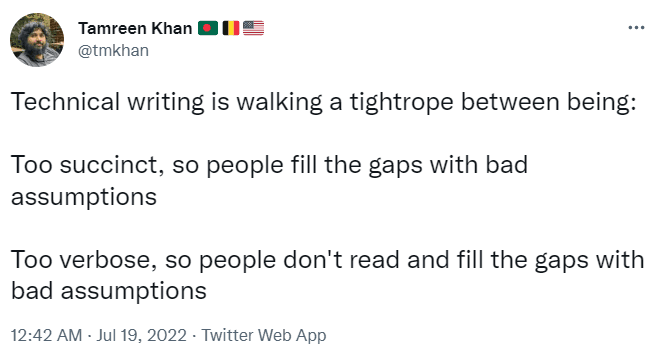
Source: Twitter
Therefore, it’s vital to provide employees with clear instructions, which you can do by implementing educational technical documents into your internal knowledge base.
However, user-oriented knowledge bases can also streamline the way your employees spend their time.
Did you know that more than 60% of customers prefer solving issues on their own rather than contacting support?
In doing so, they rely on self-service support tools such as FAQs, tutorials, and help center websites.
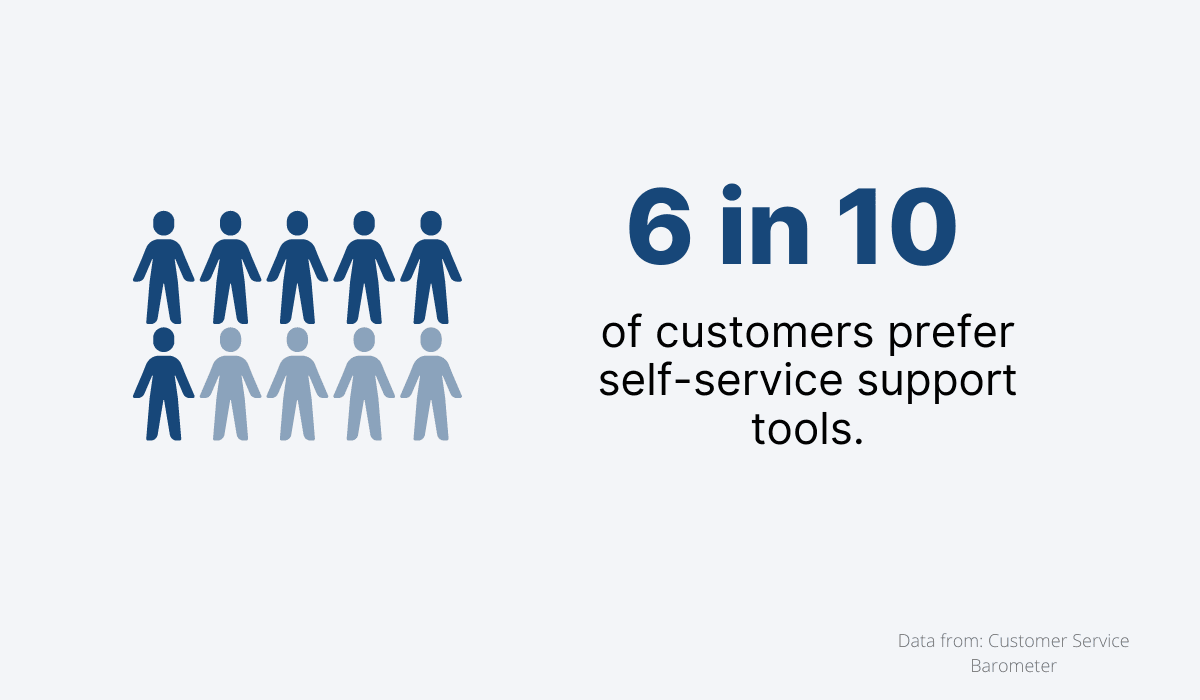
Source: Archbee
So, if you could use self-support documents to redirect more than half of the traffic away from your support staff, you’d reduce their workload and enable them to deliver a better customer experience to those customers who are experiencing more significant problems.
Of course, if you want customers to use your knowledge base effectively, the base has to contain well-written documents.
According to Ernesto Diezhandino, tech writer at Keepler, people won’t read technical documents unless they’re written plainly.
“The majority of users do not read the documentation. They don’t read documentation because it’s awful, or because it’s written in a language they don’t understand, or because it uses big words.”
And that’s yet another reason to invest in technical writing for knowledge management purposes because tech writers have the ability to translate complex technical vocabulary into everyday terms.
If you’re aiming to motivate users to independently troubleshoot their issues and thus unburden your staff, you need a technical writer to make the info about your product accessible.
Conclusion
Both technical writing and knowledge management play major roles in business success, and their effectiveness appears to multiply when you employ them in tandem.
With neatly organized, high-quality documentation, you can streamline the way your employees access the information they need for work, resulting in increased productivity.
You can also transform how your customers interact with your product, helping them become independent users.
And if you’re looking for a tool that can handle knowledge management and tech writing simultaneously, you should give Archbee a try.
Frequently Asked Questions
Technical writing is the craft of turning complex ideas into clear, actionable information so people can complete tasks, solve problems, or make decisions.
It commonly includes:
- How‑to guides and tutorials
- Product manuals and user guides
- API and developer docs
- Standard operating procedures (SOPs) and runbooks
- Release notes and change logs
- Onboarding and internal process docs
- FAQs and knowledge base articles
Great technical writing is:
- Audience‑focused: tailored to readers’ knowledge and goals
- Thoroughly researched: accurate, vetted with subject‑matter experts
- Structured for scanning: clear headings, steps, summaries, visuals
- Consistent and maintainable: standard terminology, templates, and versioning
The outcome is documentation people can find quickly, understand easily, and act on with confidence.
